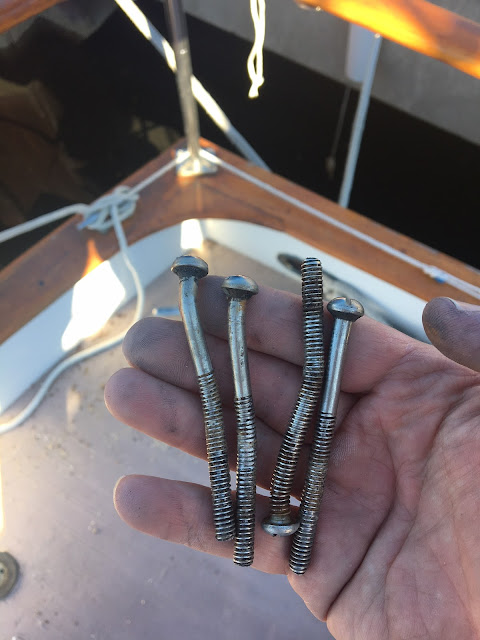When a safe harbor isn't

Since arriving home to St. Joseph, Molly has been berthed in Waterfront Marina, which is conveniently located just off the channel and within walking distance of the cottage and downtown. The marina docks are in good shape, the area is gated, and there's a pool and clubhouse. All of those things make it just about an ideal marina. Except for one thing: it's a surging, seething mess when the wind blows anywhere from SW to NW. We knew this when we decided to keep Molly there for the remainder of this season, but we hoped that there would only be one or two bad days and that those days wouldn't arrive until October. Instead, we've already endured four or five days of chafed and broken dock lines, compromised cleats, and enough aggravation for one season. The video below shows how much Molly surges around with only moderate swell in the channel just beyond the seawall. By the way, you can also see how many slip owners have dealt with the lousy conditions in the marina: they



